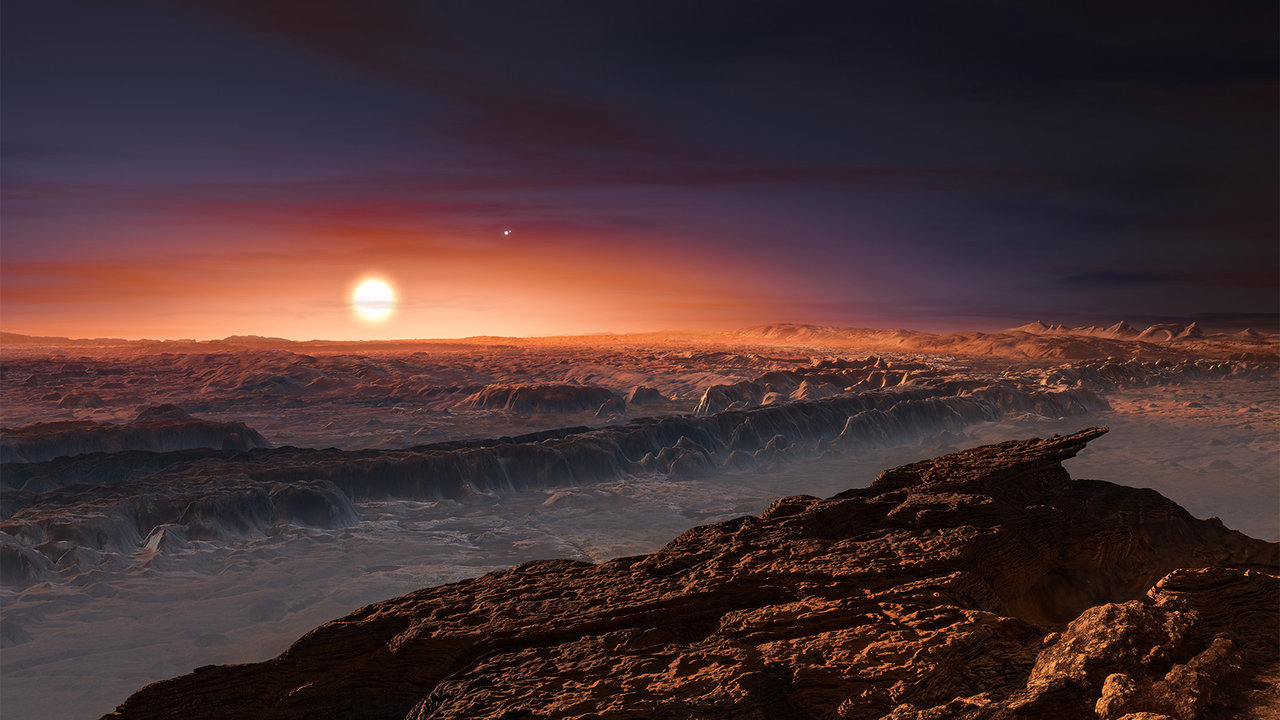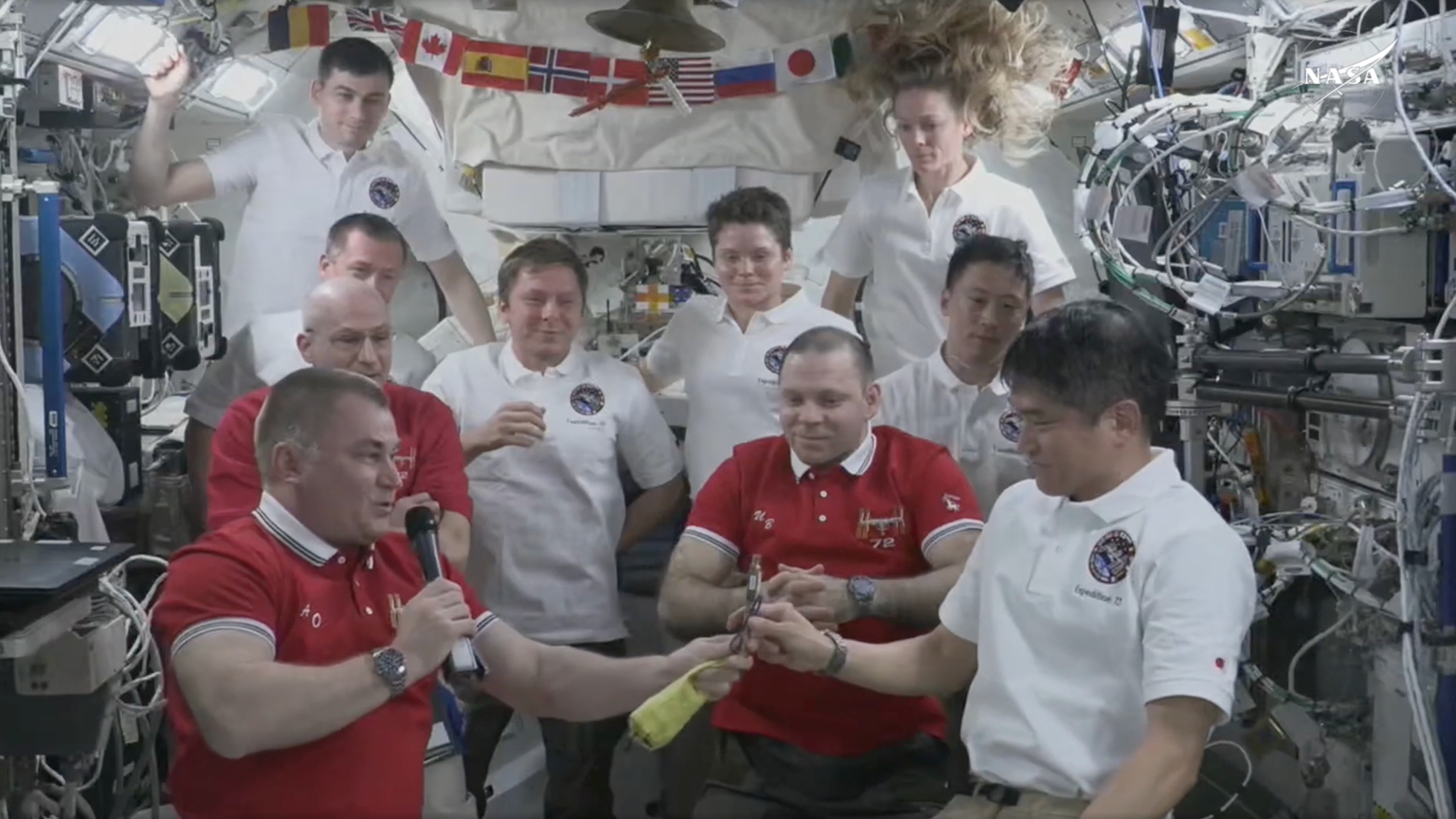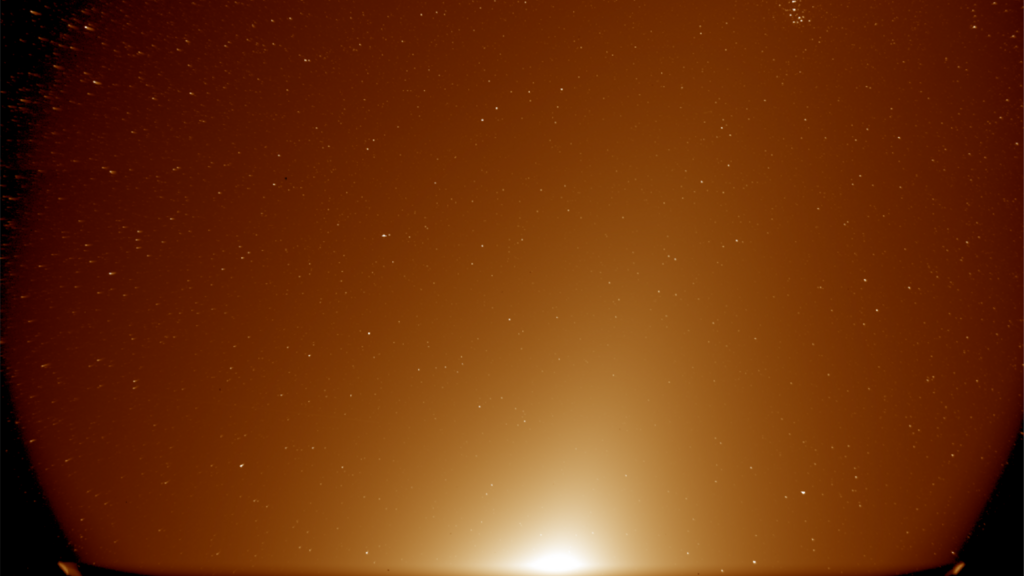The Largest Space Telescope Ever Could Study an Earth-Like Exoplanet Next Door

Around this time last year, astronomers excitedly announced the discovery of a planet roughly the size of Earth that was found to be orbiting the star Proxima Centauri. At a mere 4.2 light-years away, Proxima Centauri b — the nearest exoplanet to our solar system that we have yet identified — occupies the star's "habitable zone," meaning liquid water may be pooling on the planet's surface if it has the right kind of atmosphere and environment.
"This is really a game-changer in our field," optical physicist and astronomer Olivier Guyon remarked at the time. "The closest star to us has a possible rocky planet in the habitable zone. That's a huge deal."
But the Pale Red Dot campaign, an initiative that is searching for planets orbiting Proxima Centauri, was only able to determine Proxima b's orbit and the distance to its star, based on wobbles that the planet's motion induces in the star. A closer look will be needed to learn details about its atmosphere.
The James Webb Space Telescope (JWST), billed as "NASA's premier observatory of the next decade," could search for signs of an atmosphere on Proxima b. When it launches next year, JWST will be the most powerful space-based observatory yet, and the largest ever contrcuted. Its 6.5-meter mirror (nearly three times the size of the Hubble Space Telescope's mirror) is expected to yield insights into the entire universe, ranging from the formation of planets and galaxies to peering at exoplanets in higher resolution than ever before.
RELATED: Who Will Get First Dibs on the Powerful James Webb Space Telescope?
There is only so much telescope time for JWST, however, and as with Hubble observations, astronomers will receive access on a competitive basis. Among the many proposals for the telescope that have emerged in recent months following NASA’s solicitation of science projects, a paper accepted for publication in the Astrophysical Journal (a draft version of which is available on Arxiv) suggests using the JWST to probe Proxima b's atmosphere.
If such observations go forward, the telescope will provide an unparalleled view of Proxima b. JWST is optimized for infrared wavelengths, which can be used to examine a planet's heat emissions. Because JWST will be orbiting the sun, it won’t be peering through Earth's atmosphere, whose warmth can interfere with observations.
Get the Space.com Newsletter
Breaking space news, the latest updates on rocket launches, skywatching events and more!
"Other telescopes are not able to do this," Ignas Snellan, an astronomy researcher at the University of Leiden in the Netherlands and the paper's lead author, told Seeker in an email. "Hubble is too small and works in the wrong wavelength range. Current ground-based telescopes cannot touch the mid-infrared because of very high thermal backgrounds, and are in a not enough stable environment, in contrast to JWST, which operates from space."
RELATED: Eyeballing Proxima b: Probably Not a Second Earth
The astronomers hope to use JWST to determine whether or not Proxima b has an atmosphere. Snellan said this will be very difficult, because the planet is very faint compared to its parent star. The research team therefore proposes looking for carbon dioxide.
The team's method "looks for a striking signature that is expected from this molecule at 15 micron, that varies strongly from one wavelength to the next," Snellan explained. "It will be very challenging, but we think doable."
Finding carbon dioxide isn't necessarily a sign of life as we know it. The gas is only found in trace amounts in Earth’s atmosphere (which is mostly made up of nitrogen and oxygen), even though carbon is the primary basis for life on our planet.
But carbon dioxide is a common gas on both Venus, which has a hellishly thick atmosphere, and Mars. Though the Red Planet once had a much thicker atmosphere long ago, today it is very thin. Scientists are still investigating how this atmospheric loss occurred, but suggest that the sun might have pushed light molecules out of Mars' upper atmosphere that could not be held in by the planet’s gravity. Life may have existed on Mars in the ancient past, but scientists aren't sure if that was possible then — or even now.
RELATED: Monster Telescope to Seek Out Habitable Alien Worlds in Neighboring Star System
Might Proxima b be hospitable to life? Scientists are eager to look at the exoplanet in more detail, but Snellen notes that even better telescopes will be needed to answer that question. He suggests that the European Extremely Large Telescope could do the job after construction of the massive observatory is completed in the next decade. It would be able to probe for oxygen, which is a more definitive sign of life.
Meanwhile, the Breakthrough Starshot Initiative, which aims to one day send ultra-fast nanoprobes to the Alpha Centauri star system, is planning to soon begin examining the system's three stars. The initiative recently partnered with the European Southern Observatory's Very Large Telescope to look for worlds that could be habitable.
Originally published on Seeker.
Join our Space Forums to keep talking space on the latest missions, night sky and more! And if you have a news tip, correction or comment, let us know at: community@space.com.

Elizabeth Howell (she/her), Ph.D., was a staff writer in the spaceflight channel between 2022 and 2024 specializing in Canadian space news. She was contributing writer for Space.com for 10 years from 2012 to 2024. Elizabeth's reporting includes multiple exclusives with the White House, leading world coverage about a lost-and-found space tomato on the International Space Station, witnessing five human spaceflight launches on two continents, flying parabolic, working inside a spacesuit, and participating in a simulated Mars mission. Her latest book, "Why Am I Taller?" (ECW Press, 2022) is co-written with astronaut Dave Williams.









